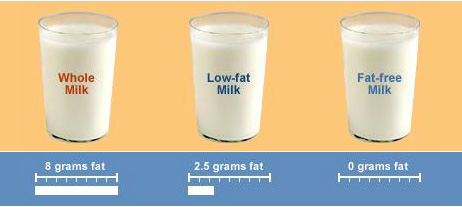Milk and Calcium Low-fat or fat-free milk is a great source of calcium because: Milk contains a lot of calcium in a form that the body can easily absorb.
Milk has other important nutrients that are good for bones and teeth. One especially important nutrient is vitamin D, which helps the body absorb more calcium.
Milk is widely available and is already a part of many people's diets.
 Is one type of milk better than the other? Today, tweens and teens have more milk choices than ever before. Most types of milk have approximately 300 mg of calcium per 8 fluid ounces (1 cup) – about 25 percent of the calcium that children and teenagers need every day. The best choices are low-fat or fat-free milk and milk products. Because these items contain little or no fat, it’s easy to get enough calcium without adding extra fat to the diet. 
 |